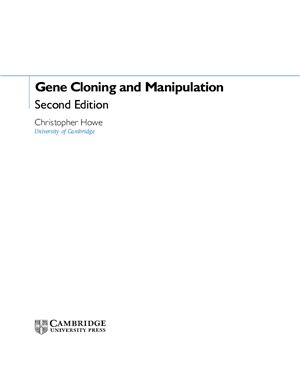2nd edition. — Cambridge University Press, 2007. — 276 p. —
ISBN-10: 0521817935, ISBN-13: 978-0521817936
Обзорная монография по современным методам клонирования. Простым и
понятным языком описаны методики ПЦР, получения библиотек ДНК,
экспрессионных векторов, получения рекомбинантных белков в
различных системах: E.coli, дрожжах, насекомых, растениях,
эукариотических клетках. В данной книги нет протоколов, но книга
даст представление о методах, применяемых в генетической инженерии.
Особенно полезна для новичков в клонировании.
Now fully updated to reflect recent advances, this introduction
provides a broad, but concise, coverage of recombinant DNA
techniques. Written for advanced undergraduates, graduates and
scientists who want to use this technology, emphasis is placed on
the concepts underlying particular types of cloning vectors to aid
understanding and to enable readers to devise suitable strategies
for novel experimental situations. An introduction to the basic
biochemical principles is presented first. Then PCR and cloning
using E. coli hosts and plasmid, phage and hybrid vectors are
described, followed by the generation and screening of libraries
and how to modify, inactivate or express cloned sequences. Finally
genetic manipulation in a range of other organisms is discussed,
including other bacteria, fungi, algae and plants, insects and
mammals. A series of 'real-life' biological problems are also
presented to enable readers to assess their understanding of the
material and to prepare for exams.
Howe C. Gene Cloning and Manipulation
- формат pdf
- размер 6,19 МБ
- добавлен 02 июля 2012 г.

